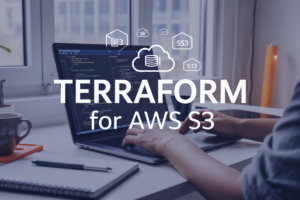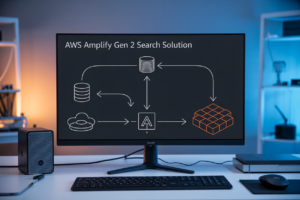Managing AWS networking costs can eat up your cloud budget fast, especially when you’re running multiple private subnets that need internet access. For cloud architects, DevOps engineers, and AWS practitioners looking to cut network expenses without sacrificing functionality, NAT instances offer a compelling alternative to the more expensive NAT gateways.
This guide breaks down practical VPC NAT instance optimization strategies that can slash your monthly AWS bills. You’ll discover how NAT instance vs NAT gateway cost comparison reveals significant savings opportunities, plus learn AWS VPC cost reduction strategies that work in real-world scenarios.
We’ll walk through the fundamental differences between NAT instances and gateways, showing you exactly how much money you can save with proper NAT instance implementation. You’ll also get hands-on resource optimization techniques and advanced cost control methods that keep your VPC architecture running efficiently while maximizing your budget.
Understanding NAT Instances vs NAT Gateways in VPC Design
Key architectural differences and functionality comparison
NAT instances run on standard EC2 instances that you manage directly, giving you complete control over the underlying infrastructure, security groups, and network ACLs. NAT gateways are fully managed AWS services that handle traffic routing automatically without requiring server maintenance. Both solutions enable private subnet resources to access the internet while blocking inbound connections, but NAT instances offer greater customization options for VPC NAT instance optimization. You can configure custom routing rules, install additional software, and implement specific security policies on NAT instances, while NAT gateways provide simplified deployment with built-in high availability across multiple zones.
Traffic routing capabilities and performance metrics
NAT instances support bandwidth up to the EC2 instance type limits, typically ranging from 1-25 Gbps depending on your chosen configuration, making them suitable for cost-effective NAT solutions in smaller environments. NAT gateways deliver consistent performance up to 45 Gbps with automatic scaling capabilities. NAT instances allow custom port forwarding and protocol-specific routing configurations, while NAT gateways handle standard outbound internet traffic efficiently. For VPC architecture optimization, NAT instances excel in scenarios requiring specialized traffic handling, custom monitoring, or integration with third-party security tools that need direct server access.
Management complexity and operational overhead analysis
Managing NAT instances requires ongoing server maintenance, including OS updates, security patches, monitoring, and backup procedures, similar to any EC2 instance in your AWS VPC cost reduction strategies. You’re responsible for ensuring high availability through multi-AZ deployments and health checks. NAT gateways eliminate operational overhead completely, as AWS handles all maintenance, scaling, and availability concerns automatically. NAT instances demand more technical expertise but offer significant cost savings for organizations with existing DevOps capabilities. The choice between solutions often depends on your team’s operational capacity and specific VPC design best practices requirements.
Direct Cost Savings Through NAT Instance Implementation
Hourly pricing advantages over managed NAT Gateway services
EC2-based NAT instances cost significantly less than AWS NAT Gateways, with t3.micro instances starting around $0.0104 per hour compared to NAT Gateway’s $0.045 hourly charge. This translates to roughly 77% savings on base infrastructure costs. For organizations running multiple availability zones, the pricing gap becomes even more pronounced when scaling NAT instance implementations across their VPC architecture optimization strategy.
Data processing cost elimination benefits
NAT instances eliminate the per-GB data processing fees that NAT Gateways impose, which typically range from $0.045 to $0.09 per gigabyte depending on your region. High-bandwidth applications can rack up substantial charges through managed services, making NAT instance vs NAT gateway cost comparison heavily favor self-managed solutions. Organizations processing terabytes monthly can save thousands by switching to cost-effective NAT solutions that don’t penalize data throughput.
Long-term financial impact on high-traffic workloads
Heavy network traffic scenarios reveal the true cost advantages of NAT instance implementation guide strategies. Companies processing 10TB monthly through NAT Gateways face approximately $450-900 in data processing fees alone, excluding hourly charges. NAT instances eliminate these variable costs entirely, creating predictable monthly expenses based solely on EC2 pricing. The savings compound over time, making AWS VPC cost reduction strategies essential for budget-conscious enterprises managing substantial data flows.
Reserved instance pricing strategies for additional savings
Reserved Instances can slash NAT instance costs by up to 72% when committing to one or three-year terms. Combining Reserved Instance pricing with Spot Instances for non-critical NAT functions creates hybrid AWS network cost savings approaches. Organizations can reserve capacity for baseline traffic while using Spot pricing during peak periods, optimizing their VPC design best practices. This dual strategy maximizes cost efficiency while maintaining network reliability across distributed architectures.
Resource Optimization Strategies for NAT Instances
Right-sizing instance types based on bandwidth requirements
Picking the right NAT instance size makes a massive difference in your AWS bill. Start by monitoring your actual network throughput using CloudWatch metrics over a 30-day period. Most workloads don’t need the high-performance instances you might think they do. A t3.micro can handle up to 5 Gbps burst traffic, perfect for development environments or low-traffic applications. For production workloads with consistent moderate traffic, m5.large instances offer the sweet spot between cost and performance. Skip the expensive network-optimized instances unless you’re pushing serious bandwidth – we’re talking 10+ Gbps sustained traffic. The key is matching your instance type to actual usage patterns, not worst-case scenarios.
Auto-scaling configurations for dynamic traffic patterns
Smart auto-scaling setups can slash your NAT instance costs by 60-70% during off-peak hours. Configure CloudWatch alarms based on network utilization and CPU metrics to trigger scaling events. Set your minimum capacity to one instance during business hours and scale down to zero during maintenance windows when possible. Use predictive scaling for known traffic patterns – like batch processing jobs that run nightly. The trick is setting proper cooldown periods to prevent rapid scaling that could disrupt connections. Target tracking policies work better than simple scaling for NAT instances since network traffic tends to be more predictable than application load.
Multi-AZ deployment cost considerations
Running NAT instances across multiple availability zones doubles your EC2 costs but can save money on data transfer charges. Single-AZ deployments route all traffic through one zone, creating cross-AZ data transfer fees that add up quickly. Calculate your monthly data transfer costs – if you’re moving more than 500GB monthly across zones, multi-AZ NAT instances often break even. The real savings come from eliminating the $0.01 per GB cross-AZ transfer fees. Place NAT instances in the same AZ as your heaviest traffic generators. For hybrid setups, consider running a primary NAT instance in your busiest AZ with a smaller backup in secondary zones.
Storage optimization for enhanced performance per dollar
NAT instances don’t need massive storage, but the right storage type improves cost efficiency significantly. Stick with GP3 volumes instead of GP2 – you’ll save about 20% on storage costs while getting better baseline performance. Size your root volume to 20GB maximum unless you’re doing heavy logging locally. Enable detailed monitoring to identify if storage IOPS become a bottleneck before scaling up compute resources. Use instance store volumes when available for temporary data and logs – they’re free and faster than EBS. Configure log rotation aggressively to prevent storage bloat. Most NAT instances work perfectly fine with the default storage configuration, so resist the urge to over-provision.
Advanced Cost Control Techniques
Network monitoring and traffic analysis for efficiency gains
Monitor your NAT instance traffic patterns using CloudWatch metrics and VPC Flow Logs to identify bandwidth waste and optimize routing decisions. Track data transfer costs, peak usage times, and unnecessary traffic flows to right-size instances and eliminate expensive cross-AZ transfers that drain your AWS budget unnecessarily.
Custom AMI creation to reduce deployment overhead
Build custom AMIs with pre-configured NAT software, monitoring agents, and security hardening to slash deployment times from hours to minutes. Your standardized images reduce human error, ensure consistent performance across environments, and eliminate repetitive configuration tasks that typically consume valuable engineering resources and increase operational costs.
Spot instance integration for non-critical environments
Deploy NAT instances on Spot instances for development and testing environments to achieve up to 90% cost savings compared to On-Demand pricing. Configure automatic failover mechanisms and use mixed instance types to maintain connectivity during Spot interruptions while maximizing your VPC cost reduction strategies for non-production workloads.
Performance Optimization While Maintaining Cost Benefits
Enhanced networking features and bandwidth maximization
Modern NAT instances support SR-IOV networking and enhanced networking capabilities that dramatically boost throughput while keeping costs predictable. Enable placement groups for your NAT instances to achieve 10 Gbps network performance on supported instance types like c5n.large, which costs significantly less than equivalent NAT Gateway bandwidth charges. Configure multiple elastic network interfaces across different availability zones to distribute traffic and prevent bottlenecks. Use instance types with dedicated tenancy only when compliance requires it, as shared tenancy provides identical performance at lower costs.
Security group configurations for optimal traffic flow
Smart security group design reduces processing overhead and improves NAT instance performance without additional infrastructure costs. Create separate security groups for inbound and outbound traffic rules, allowing granular control over connection states and reducing rule evaluation time. Implement port-specific rules rather than broad ranges to optimize packet filtering efficiency. Reference other security groups by ID instead of CIDR blocks to minimize rule updates when scaling your infrastructure, reducing both administrative overhead and potential connection disruptions.
Load balancing strategies across multiple NAT instances
Deploy multiple NAT instances behind an Application Load Balancer to achieve high availability while maintaining cost control through right-sizing. Use Auto Scaling groups with mixed instance types, combining spot instances (up to 70% savings) with on-demand instances for baseline capacity. Configure route tables to distribute subnet traffic across multiple NAT instances using weighted routing, preventing single points of failure. Implement health checks that automatically replace failed instances, ensuring continuous service without manual intervention or expensive managed service fees.
Connection tracking and session management improvements
Optimize connection tracking parameters to handle higher concurrent connections without upgrading to larger instance types. Increase net.netfilter.nf_conntrack_max and net.netfilter.nf_conntrack_buckets values to support more simultaneous connections per instance. Configure connection timeout values appropriately for your workload – shorter timeouts for web traffic and longer timeouts for database connections prevent resource exhaustion. Enable connection pooling at the application level to reduce the total number of connections your NAT instances must track, improving performance while allowing smaller, more cost-effective instance types.
NAT instances offer a compelling alternative to NAT gateways when you’re looking to cut down on your AWS bills without sacrificing functionality. The cost savings can be significant, especially for smaller workloads or development environments where you don’t need the high availability features of managed NAT gateways. By choosing the right instance types, implementing smart resource management, and fine-tuning your configuration, you can achieve substantial reductions in your monthly cloud spend.
The key is finding the sweet spot between cost optimization and performance requirements. Start by evaluating your actual traffic patterns and availability needs, then implement NAT instances strategically across your VPC architecture. Remember to monitor your setup regularly and adjust instance sizes as your workload evolves. With careful planning and ongoing optimization, NAT instances can deliver both the cost savings your budget demands and the network performance your applications require.




















